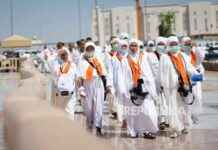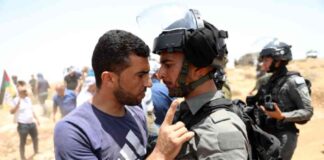Israeli Military’s Vulnerabilities Exposed in Al-Aqsa Crisis
TEL AVIV – The Israel Defense Forces (IDF) have recently released an investigation regarding a “total failure” in preventing the October 7, 2023 attack on settlements around Gaza. The report delves into the intricate details of the struggles faced by the “most advanced military in the world” against the Al-Aqsa Storm operation launched by Hamas and Palestinian resistance factions in Gaza.
The Jerusalem Post reports that the investigation highlighted numerous errors leading to the failure to stop and mitigate the invasion in southern Israel on October 7. Two primary reasons identified by the IDF investigation, disclosed on Thursday, were the commanders’ denial of defeat and the chaotic situation at the IDF headquarters. Various IDF sources revealed that as of now, Gaza Division Chief Brigadier General Avi Rosenfeld might not acknowledge that his troops were completely defeated by Hamas. He also refused to admit that this occurred before 7 a.m. on October 7.
High-ranking IDF commanders, led by Chief of Staff Lieutenant General Herzi Halevi, Chief of Operations Command Oded Basiuk, and IDF Operations Brigade Chief Brigadier General Shlomi Binder, eventually attempted to take some independent actions to understand what was happening in the South. However, they heavily relied on Rosenfeld. Similarly, although Southern Command Chief Major General Yaron Finkelman made various decisions and independent actions to comprehend the situation in the South, he also heavily depended on Rosenfeld.
None of the officials above Rosenfeld even considered the scenario where his headquarters could be completely taken over. He lacked situational awareness even after they began to realize that there were several Hamas penetrations simultaneously, not just the two or more trained by the military. None of his superiors could fathom a situation where Rosenfeld was defeated so quickly, and Rosenfeld himself was unaware of how dire his situation was until he called Air Force Brigadier General Omer Tishler at 9:47 a.m., pleading for assistance to fund the attack on his position.
In essence, Finkelman and the new air force decided to envelop the Israel-Gaza border with air strikes around 10:05 or 10:20 a.m. While the implementation of the “Hannibal Protocol” began around 10:30 a.m.
However, Rosenfeld never called his division “defeated” or “overwhelmed”. If he did, some IDF sources say that they would have acted more urgently than they did. Rosenfeld did announce the “Parash Pleshet” (Philistine Knight), a code word for the penetration from Gaza, at 6:37 a.m., but none of his superiors knew the extent of the invasion or that he was unreliable in providing current information and directing the response.
Due to Rosenfeld’s denial, IDF sources say that they were not fully aware that his division had completely collapsed, even though they knew the division was taking a beating until around noon. They said this is why they did not begin to assign new commanders to have formal managerial responsibilities over various parts of the Gaza Corridor defense until after that, and some new appointments were finalized around 1:00 p.m.
IDF did not realize and could not imagine that 157 of its border troops had been killed in just three to five hours, many of them in the early hours of the invasion. This means that the IDF High Command and Southern Command were aware of many incidents happening in real-time, but out of 114 border penetrations, they only knew about 40 percent of them by 7:30 a.m., a full hour after the invasion. By 10:00 a.m., three and a half hours after the invasion, they only knew about 60 percent of the incidents.
Only at 11:30 a.m., when Palestinian fighters and their hostages had returned to Gaza around noon, did IDF reach an awareness level of 85 percent about the incidents. Yet, they still did not know how long it would take to deploy reinforcements to the “new” trouble spot.














